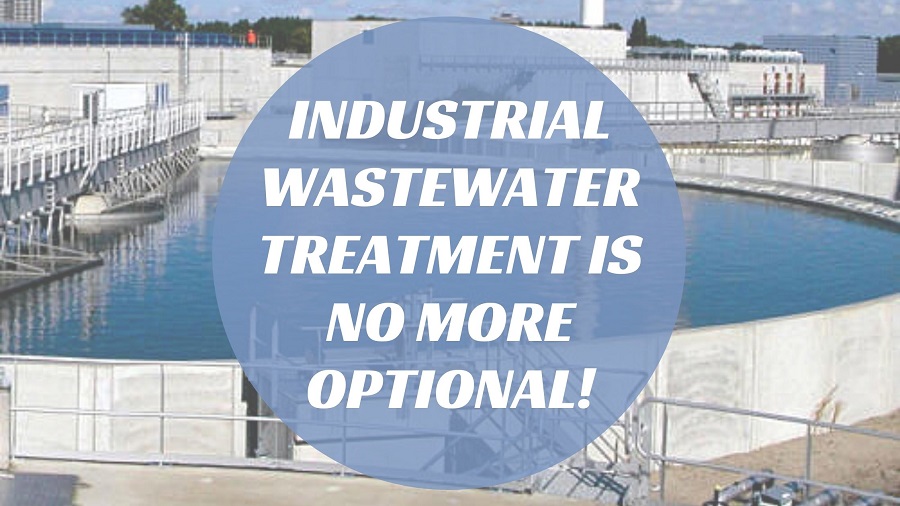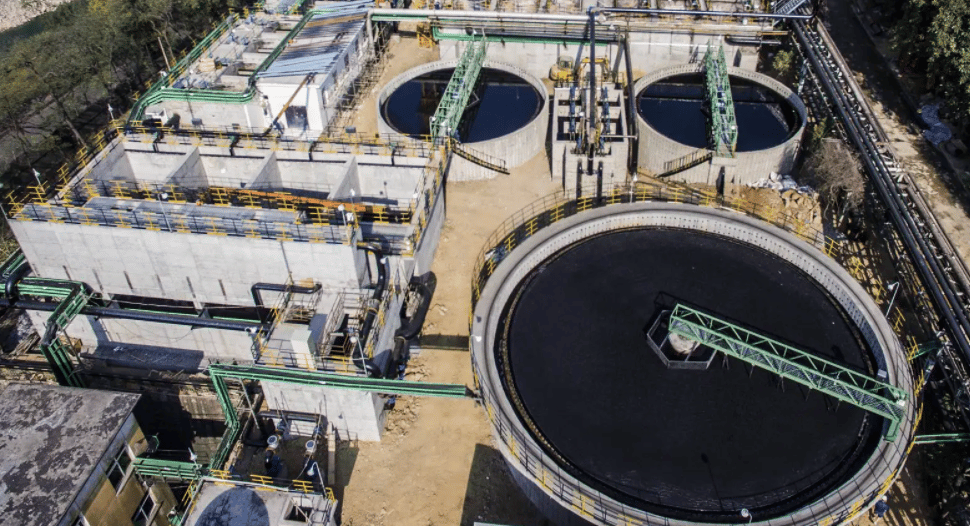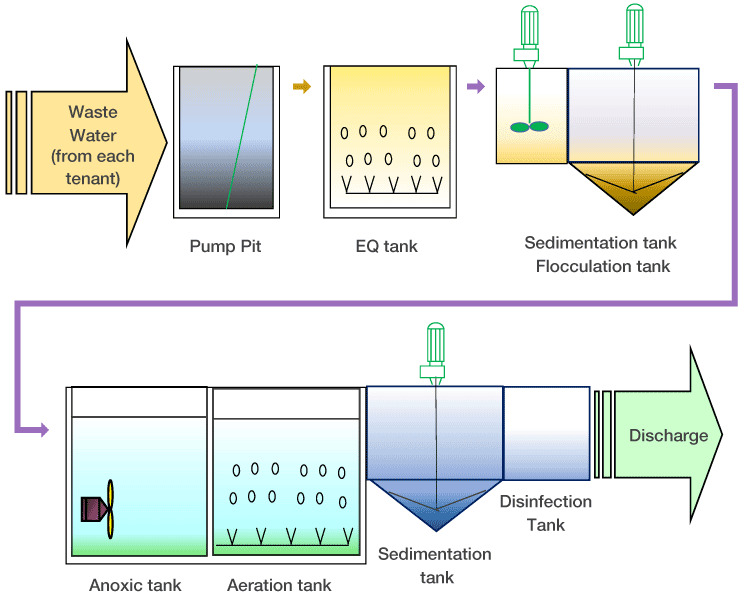Industrial Waste Water Treatment-- Customized Solutions for Effective Wastewater Treatment
Industrial Waste Water Treatment-- Customized Solutions for Effective Wastewater Treatment
Blog Article
Advancements and Breakthroughs in Hazardous Waste Water Therapy Technologies
The landscape of commercial wastewater treatment is undergoing a transformative change, driven by innovations that enhance both efficiency and sustainability. As governing criteria evolve, the combination of AI and machine discovering right into wastewater administration systems assures to enhance procedures and make certain conformity.
Introduction of Waste Water Treatment Technologies
Wastewater therapy innovations incorporate an array of methods developed to eliminate pollutants from industrial effluents prior to their launch into the setting. These modern technologies are vital for maintaining environmental balance and making certain conformity with environmental regulations. The key classifications of wastewater treatment consist of physical, chemical, and organic techniques, each offering distinctive purposes based upon the nature of the impurities existing.

Biological treatment methods utilize microorganisms to degrade natural matter, making them especially effective for organic-rich effluents. Methods like activated sludge and biofilm reactors harness the all-natural destruction capabilities of bacteria, causing significant decreases in biochemical oxygen need (BODY)
Advanced Filtration Methods
Advanced purification techniques stand for an essential evolution in the world of industrial wastewater treatment, enhancing the efficiency of impurity removal procedures. Industrial Waste Water Treatment. These techniques incorporate a series of innovations, consisting of microfiltration, ultrafiltration, nanofiltration, and reverse osmosis, which supply consecutive obstacles for various particle dimensions and chemical structures
Microfiltration and ultrafiltration utilize membrane systems to remove put on hold solids, bacteria, and bigger organic particles, enhancing the quality of effluent previous to further treatment. Nanofiltration bridges the space between ultrafiltration and reverse osmosis, successfully getting rid of divalent ions and organic compounds, therefore minimizing the lots on downstream processes.
Reverse osmosis uses the highest degree of purification by allowing just water and tiny molecules to go through its semi-permeable membranes, making it excellent for reclaiming high-grade water from industrial effluents. Recent developments in membrane modern technology, consisting of the advancement of even more fouling-resistant and long lasting materials, have dramatically improved operational efficiency and lowered prices.
Including these sophisticated filtration methods not just improves the total therapy procedure however additionally adds to sustainability efforts by making it possible for water reuse and resource healing in commercial settings. (Industrial Waste Water Treatment)
Organic Therapy Technologies

Furthermore, the advancement of engineered organic systems, such as membrane bioreactors (MBRs), integrates organic therapy with innovative membrane layer filtration. This assimilation enables higher effluent high quality and minimized impact, making it ideal for space-constrained industrial facilities. Advancements in genetically crafted microbes have also emerged, enhancing the biodegradation of certain pollutants, such as pharmaceuticals and heavy metals, that are generally testing to get rid of.
Additionally, the execution of bioaugmentation strategies, where useful microbes are introduced to boost the existing biological treatment procedures, has revealed encouraging lead to improving therapy efficiency. These technologies jointly indicate a pattern in the direction of even more sustainable and efficient biological treatment methods that can adjust to the progressing intricacies of commercial wastewater streams. As industries remain to prioritize environmental conformity, these organic advancements will certainly play an essential role in wastewater monitoring.

Resource Recovery Methods
In industrial settings, the assimilation of resource recuperation techniques has actually become significantly important for improving sustainability and decreasing waste. These methods concentrate on extracting beneficial products and check energy from wastewater streams, thus transforming potential toxins right into reusable resources.
One popular approach is nutrition healing, where nitrogen and phosphorus, frequently existing over in wastewater, are recorded and exchanged fertilizers. This not just minimizes environmental effects but additionally supplies a circular economy service for farming applications. Furthermore, innovations such as anaerobic digestion enable the conversion of natural waste right into biogas, a renewable resource resource that can counter nonrenewable fuel source use in industrial procedures.
Furthermore, advanced filtration and membrane layer innovations promote the recovery of commercial by-products such as salts and steels. These recovered materials can be rehabilitated right into production processes, decreasing the need for virgin sources.
Future Trends in Waste Water Monitoring
As sectors significantly prioritize sustainability, the future of wastewater monitoring is established to go through substantial improvements. Technical improvements, such as expert system and artificial intelligence, will certainly allow a lot more efficient tracking and administration of wastewater systems. These modern technologies can anticipate maintenance requirements, enhance therapy procedures, and enhance decision-making, eventually minimizing operational expenses and ecological influence.
Furthermore, the integration of circular economic climate principles will certainly play a vital role in wastewater monitoring. Industries are expected to change towards systems that not just deal with wastewater however also recuperate useful sources, such as nutrients, water, and power. This transition will certainly lessen waste and advertise the reuse of materials, lining up with worldwide sustainability goals.
Arising treatment methods, such as membrane layer bioreactors and advanced oxidation procedures, will certainly better improve the efficiency of wastewater therapy, enabling greater quality effluents suitable for you can find out more reuse. Additionally, regulative structures are likely to evolve, highlighting stricter standards for wastewater discharge and motivating sectors to embrace innovative therapy solutions.
Final Thought
In final thought, the development of commercial wastewater therapy modern technologies shows a considerable change in the direction of improved effectiveness and sustainability (Industrial Waste Water Treatment). Advancements in sophisticated filtering strategies, organic therapies, and source recuperation techniques highlight the sector's dedication to ecological stewardship.
The landscape of industrial wastewater treatment is going through a transformative change, driven by innovations that enhance both efficiency and sustainability.Wastewater treatment innovations incorporate a variety of approaches developed to get rid of impurities from industrial effluents before their launch right into the atmosphere.Harnessing the power of organic processes has led to significant developments in the treatment of commercial wastewater.Additionally, the execution of bioaugmentation methods, where valuable microbes are introduced to enhance the existing biological treatment procedures, has actually shown promising outcomes in improving treatment performance. These developments jointly symbolize a pattern in the direction of even more lasting and reliable biological treatment methodologies that can adapt to the explanation developing complexities of industrial wastewater streams.
Report this page